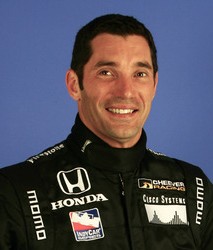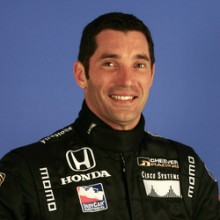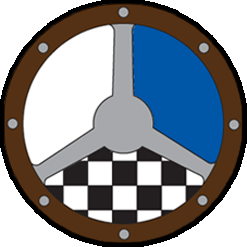Ask a pro
Receive advice directly from today’s top stars


Max Papis
Formula One, IndyCar, NASCAR and sports car driver
Max Papis is one of the few drivers to have competed in Formula One, IndyCar, NASCAR and Le Mans.
The 45-year old Italian is one of the most experienced and versatile drivers still competing and his many successes include multiple Champ Car wins, victory at the 24 Hours of Daytona and the 2004 GrandAm championship title.
This year he has competed in the Tudor United Sports Car Championship, finishing on the podium at Watkins Glen in June. Since 2012 he has also acted as a driver coach for NASCAR stars Austin and Ty Dillon and in 2014 he won the ROTAX Pan American Karting Championship.
Max Papis answers your questions!
-
Pat
Max, at the 24 Hours of Daytona do you set-up the car’s suspension to run on the oval part or the road course part of the track?




There is a very big compromise on the setup at the Daytona 24 Hours. Obviously the straights involve the banking and when you run on the banking you need to be really conscious of your camber, otherwise you will overheat the inside shoulder of your tire and you will have an issue. The usual thing is that the setup is never really 100% ideal for the infield because you have to make a lot of compromises in order to have durability and speed on the banking. So it always makes it very challenging in terms of handling on the infield because you have to compromise on mechanics and aero. It really is one of the major factors to get right in order to win the race – that and to have a car that has great braking capability.
SAFEisFAST.com video:
-
Anonymous
When you were first starting out as a professional racing driver who were your first sponsors and how did you get them?




I was paid to race karts when I was 16 or 17, but then I wasn’t paid to race again until I was 24 or 25. I found all my own sponsors, I picked up the Yellow Pages and I called every single company that could have some thing to do with the sport of racing in a 500 mile radius. I went to visit all of them one by one to try to create interest and maybe out of 1,000 companies I was able to find two who believed in me as a person and who would support me. So the best thing I can tell you is never give up if you have this dream, do whatever it takes. In my young career I definitely drove more miles on the road trying to pursue sponsors and talk to companies than what I did driving my race car. I had nobody else that was going to do that for me. There were people who complained that they didn’t have sponsors and I didn’t have them either, but the difference was that I went out there and tried to put it all together. It really gave me a good kick-start and I still have great relationships with those two companies that helped me when I was in my mid twenties.
SAFEisFAST.com video: Sponsorship: Where to Begin
-
Matt
I recently did a hot lap as a passenger in a GT car with a pro driver. He was very fast. I noticed his hands made many quick corrections – they never stopped moving. Is this a particular style of driving or just what is needed when driving at the very limit?




Matt, there is no such thing as a ‘correct’ driving style. Driving is like walking – everyone does it in a different way. There are drivers who are extremely fast and on the limit but look super smooth and there are other drivers that are fast and on the limit that are very reactive. In racing you can achieve your goals driving the car in very different ways. Obviously having fast hands always helps because it is a great way to recover out of tough situations. That has been one of my characteristics since the beginning of my career, but there are guys who look like they are going to the grocery store and instead they are running super fast laps.
-
C&B Ruehl
My 10-year-old son has been a kart racer for the past five years with the same dreams of your youth. What advice you would give us in his path to being a professional racer? Thanks and keep racing on.




Talent is the number one thing that is going to bring your son towards the goal that he wants to achieve. Everything else is complimentary, but the things that are going to make the difference to whether or not he is going to be a pro is his talent and his dedication. My best advice is keep following your dream, stick with your values because if you have to go against your values to achieve your goals then you lose perspective of who you are. In my career there were a lot of times where I had to make a tough decision and I have always believed in my instinct and followed my values: the values of competition, of being fair but tough and of respect for others.
-
Kevin A.
Mr. Papis, congratulations on all your years of racing success. Of the major series that you have driven, how would you compare them with one another? How would you rank them (NASCAR, F1, Sports Car…) concerning difficulty in learning to drive, or the talent of your competitors? Thanks and best wishes.




First of all thanks a lot for the great compliment. I tend to really not compare series with series because it would be like comparing soccer with football. You know some people like some things and some people like another. The thing I can tell you is that for sure the most demanding cars that I have driven were the Champ Cars. The Miller Lite car that I drove for many years was definitely the series that I got the most satisfaction from because to be champion you had to be a complete driver. You went from driving on a short track at Nazareth one weekend to driving Long Beach, then Michigan, then Toronto and then Laguna Seca. So the level of competition and the depth of that field was amazing in Champ Car.
The only other series that had that depth I would say is NASCAR. NASCAR to me is nowadays the most competitive series that I have been in. Those drivers that are involved are not just great oval drivers but they are great drivers overall and they are definitely the best American racers.
-
Tom
Hi Max, who was your racing hero growing up?




Growing up my hero and mentor was Ayrton Senna. I got an opportunity to know him as my engine tuner in karts was the same person who mentored Senna in his early career and through that we built a very special relationship. He was a big brother to me and someone that guided my career tremendously. My other great hero is Mario Andretti. I love Mario because he is a real racer, no matter if it is a midget or if it is a Sprint Car or if it is an IndyCar he drove it hard. He has been successful in everything he did and for sure I always looked up to his persona and his values, the way he behaved on and off the track.
-
Brick Battersby
Out of all the tracks you’ve driven, what’s your favourite corner and why?




I don’t really have any real preference, but what sticks out the most in my mind is the second Lesmo at the old Monza, that second fast right-hander that was almost flat out. There is always a corner that when you are a kid you talked about all the time, this corner was that one for me, especially growing up in Italy. The other ones that come to mind are Michigan’s turns one and two. In qualifying in a Champ Car entering the corner at 245kph, maybe even more, those are the two greatest memories I have of specific corners and two of the most challenging ones I have driven. Obviously the Corkscrew is another one because of the history and the dreams, but that is a completely different reason as to why I like it.”
-
Benjamin
You recently won a major karting championship; do you find it difficult to step back into a kart after racing in much quicker machinery? What advice would you give karters to help them get quicker?




If you are a racer you are a racer. The reason why I race karts is because they are the most pure form of racing. It is you and the machinery and you are only about an inch from the ground. It is the greatest sensation that you can have. Is it difficult when you go from a big car to a kart? Yes of course it is, but a race car driver is able to adapt and do so quickly. It took a while and I had to get a really good coach who helped me understand how to drive a modern kart on asphalt, because obviously things changed tremendously from when I drove them. Nowadays you are not pitching the car sideways anymore, you drive it a lot straighter and you use the grip of the tire and the chassis a lot more. The best advice I can give to kart drivers to get quicker is the less spectacular you look and the more efficient you are the faster you will go. Every time you turn the steering wheel it is like hitting the brake. So the less you turn the wheel the more speed you will have and that is the main thing I had to learn. It is really important not to slow down your kart with too much steering input.
SAFEisFAST.com video:
-
Anonymous
I think we all have our blind spots where if we could figure them out, we’d have an “Ah Ha!” moment. What has been your most profound “Ah Ha!” moment in driving/ competing/ coaching in all these different cars, and what advice would you give to all of us? Grazie mille from the FL Panhandle!




That is a really good question. One of the most important things I have learned in my career, whether you want to call it a blind spot or not, is when I realised exactly why I was racing and what I was racing for. Growing up I wanted to make sure that my dad was proud of me, make the people around me proud and I realised that I was racing looking for their approval than just trusting my instinct and getting the satisfaction from within. When I learned that satisfaction comes from within, you don’t really need confirmation from the outside. There was a time that I realised that the people around me who really cared, who really loved me, loved me anyway no matter if I finish first or if I finished last. That has been for sure the biggest light bulb in my career.
-
Paula
Hello Max! In your experience what are some keys to be successful in endurance races?




There are several but fitness is very important because you know driving endurance races means you spend a lot of time in the car and when it counts at the end of the race you need to be ready. Together with that is the fact that when you are a great endurance driver you don’t notice if you have passed one car, 20 cars or no cars in a single lap. What does that mean? The consistency of your driving and how you deal with traffic and how you squeeze the performance out of the car is very important to being a successful endurance driver. It doesn’t matter if you post the fastest lap of the race, but it really matters that you don’t lose five second passing cars in a lap and you don’t squeeze too much out of the car when you are by yourself. Great endurance drivers are noticed because they look like they are always racing by themselves even when are surrounded by traffic.
-
John Sante
What do you make of the new aero-kits and design philosophy in IndyCar today?




I was really disappointed when I first saw the new aero kit. I was looking forward and hoping that it would have been a different shape and have different ideas and not just have a bunch of winglets piled up one on top of the other. I felt that, at least from the outside, that it was not a very smart decision by the series because it just created an extra expense for teams without improving or giving anything to the show. So the design of the Dallara car in itself you know has been a great design but it is a car that is now out dated and has been built to a budget. I was hoping to see a different shape like we had with the Lola, Raynard, Swift and Eagle concept cars. Instead I could only see a couple of extra winglets here and there but to me that is not why aero kits are made.
-
Nemanja Popic
What is your opinion on Formula E and electric powered racing cars in general?




It’s a very different concept to get used to. I am a person that goes to watch races because I love the noise of the car and I don’t really go to see the technology or to see if you can change gear in five milliseconds. I do like the fact that they opened up a research and development situation for electric vehicles as that does a lot for the manufacturers, but I’m not really sure how manufacturers will relate to open wheel cars. If they wanted to create a platform for the manufacturer I thought Formula E should have been more like a real electric cars, as in they look more like the electric cars you can buy in real life. The fact that it is an open wheel car does not relate to what people will drive on the roads. Also the noise is gone and what attracted me to race cars in the first place was the smell, the noise and the vibrations and there is none of that in that series. But for sure it has a lot of interesting parts.
-
Anonymous
Given the costs and improbability of success in open wheel racing for a driver without millions at their disposal, what career path would you recommend for someone out of karting?




Nowadays what happened to a kid like me who came up with not very much and achieved most of his dreams is a lot more difficult, but it is not impossible. Guys like Kyle Larson and Carl Edwards came from nothing and are achieving great success in NASCAR. If you like oval racing I would try the NASCAR path as talent really shines through in those series. I would try to go through the dirt side of the sport where if it doesn’t happen you can still come back and have a good racing career on the dirt tracks. But if I was 12 years old again and not interested in oval racing, then I would look at things like V8 Supercars in Australia and at Super GT in Japan because you can be a professional driver and achieve a lot of your dreams in those categories.
SAFEisFAST.com video:
-
Anonymous
What are your opinions from a driver’s perspective on a shielded or closed cockpit in open wheel racing?




After what happened to my friend Cristiano and what happened to Justin Wilson and Felipe Massa, open wheel racing needs some evolution. I’m still on the fence about it though as I have thought a lot about having a complete closed cockpit. I would like to see a technological approach where there is a study and some thought put behind what would be the best way to achieve the goal and not just base a solution on theory. I think that if you are going to close the cockpit completely you are going to definitely lose something, but with the right approach a solution will be found where you can still maintain its integrity and make it safer than it is now.
-
Nick Butcher
Will the new Haas F1 team be popular in America? Or do they need an American driver to really grow F1 as a sport in the USA?




At the moment Lewis Hamilton could walk around Disney World without being disturbed, but if Dale Jr showed up he wouldn’t get 10 feet before he got mobbed. And I really don’t think that Formula One will ever be as popular here as it is in other places around the world simply because it is not part of the heritage of American racing. Of course I think that the team will create some interest but I am not expecting them to drive a crowd to the race track just because there is an American team. It would help if there was an American driver in an American team, but nowadays the best US drivers are, in my opinion, in stock car racing. The only guy I could see who could move to F1 is Graham Rahal. He has the name and the personality and would be a guy that would fit really well into Formula One. However I believe that Formula One will never command the USA’s interest like NASCAR does.
-
Ahmed
Where do I start if I want to become a professional racing driver? What advice would you give a complete beginner?




Number one thing is you need to have talent. You’ve got to start racing in stuff like karts and dirt racing and you must be honest with yourself about whether you have the ability and the passion to get you through. Remember that nobody can teach talent and nobody can teach speed. I always say it is much easier to slow down a thoroughbred than to whip a donkey! If you are in America I would definitely start racing on dirt or if not start racing karts on asphalt. These are the two things I would do to understand if I have the talent and if I have the passion for it. From there the most important thing is to be honest with yourself and to not find excuses. If you are not successful there are reasons why, if you are successful you need to embrace what you do and get better every day. The most important thing that I can say is that this is more a question of life than a question of racing. How much are you willing to dedicate yourself to your goals?
-
Lisa Kuehler
I really struggle to brake late into slow corners off a fast straight. I either brake too hard and lock my wheels up or brake too early and lose time. I just can’t get it right. How do you approach these hard braking zones?




When I don’t know exactly where my braking point is, and let’s say that the goal is braking at the 300 marker, instead of going to the 300 marker and trying to stop my car I do something a little different. I initially start letting off the gas at the 400 marker and put the brake on at 350. Next time I let off at 350 and brake at 320. When I feel more comfortable I start letting off at 300 and start to brake at 290. All of that is to give myself the time to know and understand the bumps and what is happening on the track and if the conditions and the tyre will allow you to go and use the full power of the brake. That definitely has been the best tool that I have been using in order to learn a new track and learn how to brake without locking up or making a big mistake.
SAFEisFAST.com video:
-
Esteban
Who do you think is the best racing driver in the world at the moment? Why?




I don’t think that there is a way to really answer this. Everyone is a champion in what they do. It’s not like soccer where you play with the same ball and you do the same thing all around the world. The thing I can tell you is that, in my book, the best ever racing driver was Ayrton Senna and I haven’t seen anyone with talent, dignity, attitude and values like Ayrton had. Some people have some of those characteristics, some have others, but so far I haven’t seen one driver who has all of this together.
-
Joey
After Austin Dillon’s massive accident earlier in the NASCAR season did you give him any advice? If so what was it and if not, what advice would you give any other driver that had suffered a similar crash?




Firstly I was just concerned about Austin. I care for Austin, Ty and all the Dillon family as if they were my own. I work with them I saw them grow up from being kids to being excellent racing drivers and that relationship goes beyond racing. When I saw that he was fine we talked a little bit about it. I asked him what he felt protected him and what didn’t and I really didn’t have any specific advice. The best thing I could say to anyone involved in a big crash is that if you love the sport you have to be willing to take risks. If you’re not willing to put everything on the line it means that the sport is not for you. If you need encouragement to back in the car you have to really think is this something you want to do, because maybe it is a sign that your heart is not there. In my career I never had a doubt and the day I have one is the day that I stop.
-
Brian Cruz
You’ve raced in so many series over your career, but what else would you like to achieve behind the wheel?




I really would love to do the Bathurst 12 Hour, the Nurburgring 24 Hour and to do some races on dirt. I don’t know if any of this will happen, but if not I have already achieved a lot for a kid who was born in a small village so I am blessed for everything that has happened to me anyway. I always say in life it is not about the trophies you have, it is about the story you write and I am really proud of the story I have written.
 Road Racing Drivers Club
Road Racing Drivers Club
 Share
Share







